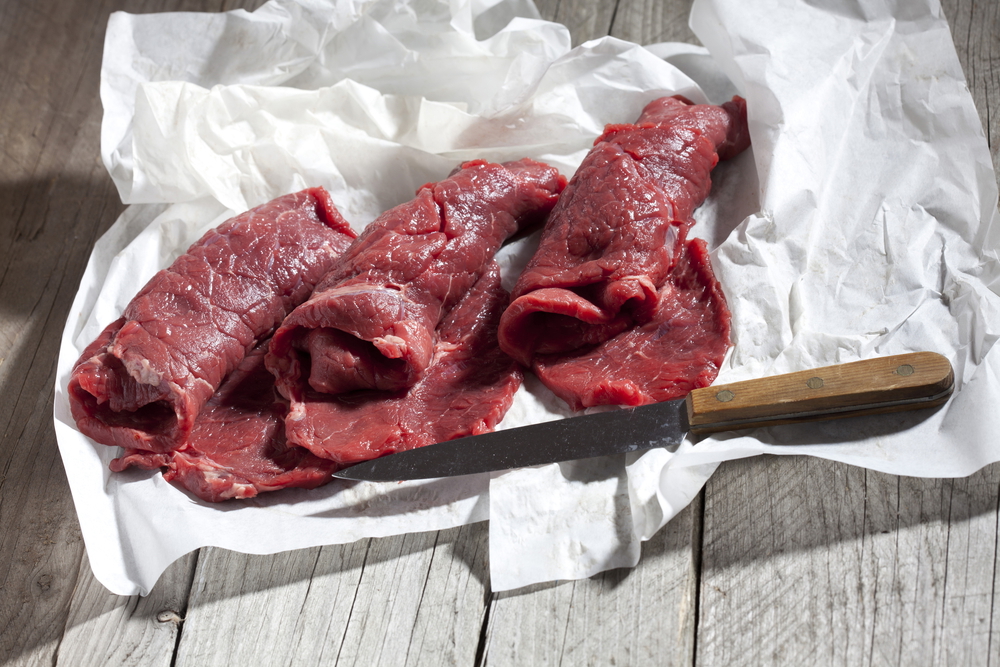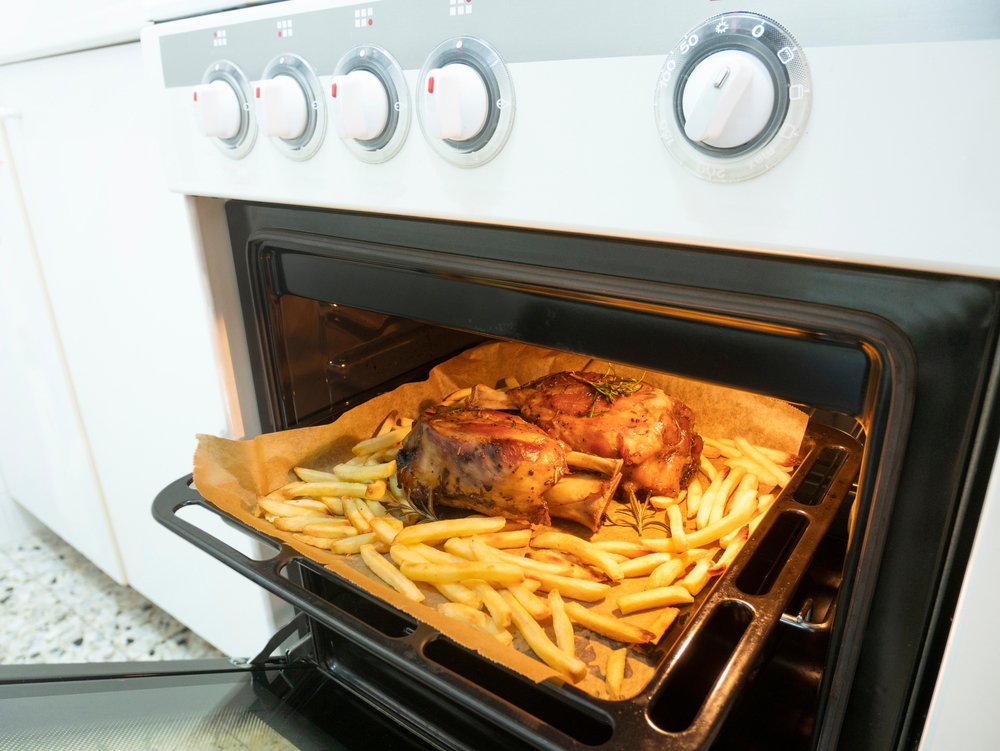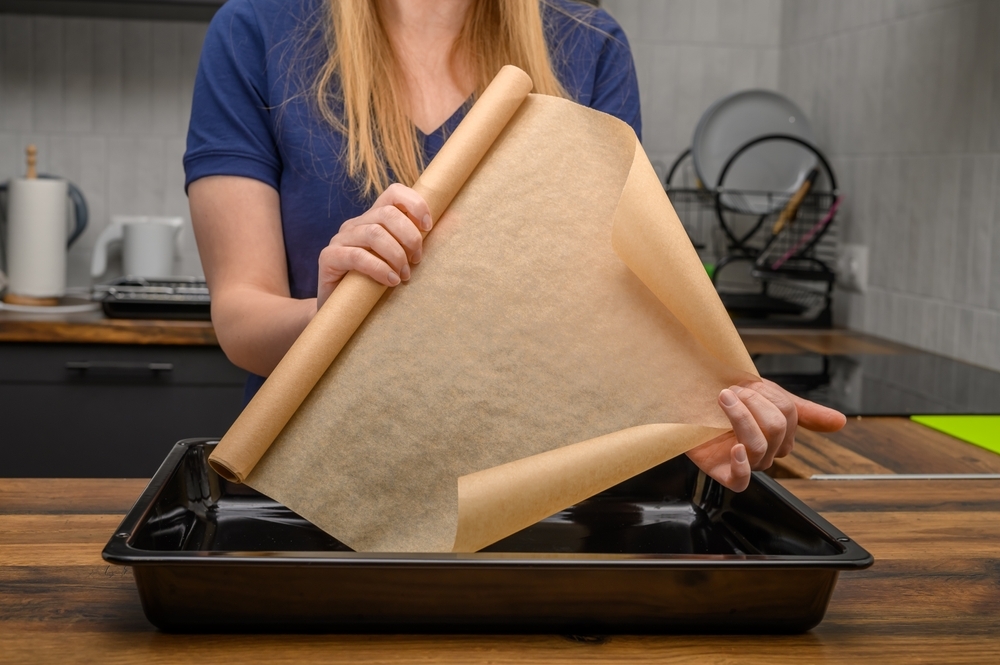Greaseproof Paper on the Grill: Can It Handle the Heat?
By Alysse Phily · 3. July 2024
Can you use greaseproof paper on a grill? Yes, but with specific precautions.
This article will guide you on how to use greaseproof paper on the grill safely, the benefits, limitations, and alternatives you might consider.
Key Takeaways
- Greaseproof paper can be used on a grill using indirect grilling techniques to prevent it from catching fire.
- Greaseproof paper is heat resistant up to 220°C, but it’s less tolerant of extreme heat compared to options like parchment paper.
- Alternatives such as parchment paper, aluminium foil, and butcher paper may offer better and safer options depending on the grilling task.
Understanding Greaseproof Paper
 row beef roulades and a knife on greaseproof paper
row beef roulades and a knife on greaseproof paper
Greaseproof paper, often found in kitchens worldwide, is a versatile tool with many uses. It’s a type of paper that has been treated to resist moisture and grease, making it an excellent choice for cooking and baking.
This paper is typically unbleached and can be coated with silicone, which gives it its heat-proof and non-stick properties.
These features are what make greaseproof paper a popular choice for lining baking sheets and wrapping foods that can get messy.
However, while it’s great for baking, greaseproof paper isn’t just limited to the oven. It’s also commonly used in food packaging due to its oil-repellent qualities.
These properties should be taken into account when deciding whether to use greaseproof paper on a grill.
Can You Use Greaseproof Paper on a Grill?
 baked pork and chips on greaseproof paper
baked pork and chips on greaseproof paper
The short answer is yes, you can use greaseproof paper on a grill, but with certain precautions.
Although the heat-resistant properties of greaseproof paper allow its use on a barbecue grill, it’s imperative not to expose it to direct heat or flames.
Direct exposure to high temperatures can cause the paper to catch fire, posing a serious fire hazard.
Indirect grilling techniques are recommended for safely using greaseproof paper under a grill. This means:
- Placing the paper and food on the cooler side of the grill, away from the direct heat source.
This method not only prevents the paper from burning but also allows for more even cooking of delicate items.
With careful handling and proper setup, greaseproof paper can be a convenient tool in your grilling arsenal.
Safe Temperature Limits for Greaseproof Paper
Greaseproof paper is heat resistant up to 220°C, which is generally sufficient for most grilling applications.
However, unlike parchment paper, which can withstand high temperatures due to its silicone coating, greaseproof paper is less tolerant of extreme heat.
Parchment paper can be used at temperatures above 215℃-230℃, making it a slightly more robust option for high-temperature cooking.
Close monitoring of the temperature is required when using greaseproof paper on the grill.
Keeping the grill’s temperature within the safe range ensures that the paper maintains its integrity without catching fire.
This caution is particularly important when grilling foods that require longer cooking times or higher heat.
Best Practices for Using Greaseproof Paper on the Grill
A bit of strategy is needed to avoid potential pitfalls when using greaseproof paper on the grill. One key practice is to always place the greaseproof paper away from the direct heat source.
This can be achieved through indirect grilling techniques, which we’ll cover in more detail.
Another great use for greaseproof paper on the grill is wrapping vegetables and fish, helping to retain moisture and infuse flavours.
One must also remain conscious of potential fire hazards. Greaseproof paper can catch fire if it gets too close to open flames or high heat sources.
Keeping the paper at a safe distance from direct heat and closely monitoring the grill can help prevent dangerous flare-ups.
Adhering to these best practices enables the safe use of greaseproof paper in your grilling routine.
Indirect Grilling Techniques
Indirect grilling is a technique that involves setting up your grill with a two-zone fire. This means placing the coals on one side of the grill and the food on the opposite, cooler side.
Greaseproof paper is well-suited to this method as it keeps the paper away from direct flames and high temperatures.
To set up a two-zone fire, follow these steps:
- Arrange your coals on one side of the grill and leave the other side empty.
- Place your food wrapped in greaseproof paper on the cooler side.
This setup allows for even cooking and prevents the paper from burning. Indirect grilling, similar to using an air fryer, is particularly useful for cooking delicate items like fish and vegetables that benefit from a gentler heat compared to a hot grill.
Wrapping Vegetables and Fish
Wrapping vegetables and fish in greaseproof paper is a fantastic way to lock in moisture and flavours while grilling.
To do this, simply fold the edges of the greaseproof paper to create a sealed packet. This method, often referred to as “en papillote,” creates a mini-steam environment that cooks the food gently and evenly.
When preparing your packets, ensure that the paper is folded tightly to prevent steam from escaping.
This technique works wonders for grilling veggies like potatoes and meats like fish, infusing them with delicious smoky flavours while keeping them moist.
It’s a simple yet effective way to elevate your grilling game and impress your guests with perfectly cooked, flavourful dishes.
Alternatives to Greaseproof Paper for Grilling
 woman holds roll of brown baking paper
woman holds roll of brown baking paper
While greaseproof paper can be used on the grill with caution, there are several alternatives that might be better suited for certain grilling tasks.
Parchment paper, aluminium foil, and butcher paper each have their unique benefits and potential drawbacks.
A better understanding of these alternatives aids in selecting the most suitable material for your specific grilling needs.
Some options for grilling and cooking are:
- Parchment paper: a safer option for grilling, especially with indirect heat.
- Aluminium foil: excellent for creating foil packets and lining baking sheets, but be aware of the potential risks of aluminium leaching into food.
- Butcher paper: specifically designed for use with smokers and excels at sealing in moisture while cooking meats.
Parchment Paper
Parchment paper is a popular alternative for grilling due to its non-stick, non-toxic properties.
It can withstand temperatures up to 230°C without burning or catching fire, making it a reliable choice for many grilling applications.
Because of its heat-resistant properties, it’s a good idea to use parchment paper for indirect grilling.
It can be a great substitute for aluminium foil when grilling vegetables or fish, providing a non-stick surface that simplifies cleanup.
However, it’s not recommended for grilling meats that require longer cooking times, as it might not hold up as well under prolonged exposure to heat.
Aluminum Foil
Aluminium foil is a staple in many kitchens for its versatility and durability. Heavy duty foil, especially the heavy-duty aluminium variety, is recommended for grilling, as it can withstand high heat and is less likely to tear.
When using non-stick foil, ensure that the food is placed on the dull, flat finish side for optimal results.
However, there are potential risks associated with using aluminium foil on the grill. Recent research in electrochemical sciences suggests that aluminium can leach into food, particularly when cooking acidic foods at high temperatures.
Despite these concerns, aluminium foil remains a popular choice for creating foil packets that lock in heat and juices, making it ideal for grilling meats and vegetables.
Butcher Paper
Butcher paper is specifically intended for use with smokers, making it an excellent choice for sealing in moisture while cooking meats.
Unlike greaseproof paper or parchment paper, butcher paper is designed to withstand the long cooking times and low temperatures typical of smoking.
It allows smoke to penetrate the meat while retaining moisture, resulting in tender, flavorful dishes.
Additional Tips for Grilling Success
Achieving grilling success involves more than just choosing the right materials. A few additional tips can significantly enhance your grilling experience.
Planning ahead, including timing your BBQ setup and using a chimney starter, can set the stage for a smooth grilling session.
Using natural fire sources like coal or wood, rather than BBQ fluids, can also improve the flavour of your food.
Another tip is to keep a spray bottle of water handy to douse any unexpected flare-ups.
Experimenting with new ingredients, such as grilling new potatoes or smaller vegetables, can add a smoky, charred flavour to your BBQ that will delight your taste buds.
Finally, setting up your grill for ‘two-zone’ cooking, with coals on one side, helps manage different cooking speeds and avoids burning.
Prepping Your Grill
Proper grill preparation is key to achieving optimal performance. Start by preheating your grill for about 10-15 minutes before placing any food on it to ensure even cooking.
Heating the grill grate for 7-10 minutes can help loosen any leftover residue from previous grilling sessions.
Next, scrub the grill grate thoroughly with a metal-bristle grill brush to remove any stuck-on food.
Oil the grill grate using a paper towel dipped in vegetable oil to create a non-stick surface, preventing food from sticking during cooking and making cleanup easier.
Properly preparing your grill sets the stage for a successful and enjoyable grilling experience.
Summary
In conclusion, while greaseproof paper can be used on the grill with caution, understanding its properties and safe temperature limits is crucial.
Employing indirect grilling techniques and wrapping delicate items like vegetables and fish can enhance your grilling experience.
However, alternatives like parchment paper, aluminium foil, and butcher paper may sometimes be more suitable depending on the food and cooking method.
By following the best practices and additional tips outlined in this post, you can enjoy a safe and successful grilling session.
Whether you’re a seasoned grill master or a newbie, these insights will help you make the most of your BBQ grill and impress your guests with delicious, perfectly cooked dishes.
Frequently Asked Questions
Can greaseproof paper be used directly over the flames on a grill?
No, you shouldn’t use greaseproof paper directly over flames on a grill because it can catch fire. Instead, use indirect grilling techniques to keep it away from direct heat.
What is the maximum temperature greaseproof paper can withstand?
Greaseproof paper can withstand temperatures up to 220°C before it starts to burn. So, avoid going beyond this temperature to prevent damage.
Is parchment paper a good alternative for grilling?
Yes, parchment paper is a great alternative for grilling, especially with indirect heat, as it can handle temperatures up to 230°C without burning. It’s a safe and convenient option for your next barbecue.
What are the risks of using aluminium foil on the grill?
Using aluminium foil on the grill can leach aluminium into your food, especially when cooking acidic foods at high temperatures, posing a potential health risk.
How should I clean my grill after cooking?
To keep your grill in top shape, clean it after each use by scrubbing off food residue with a grill brush, wiping the grates with a damp cloth, and cleaning the drip pan to prevent flare-ups and maintain its performance. 🍴🔥

